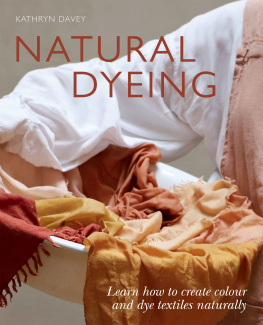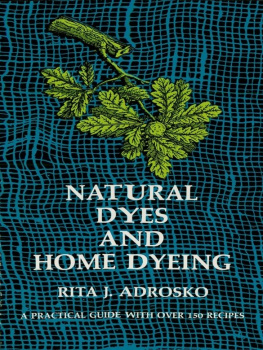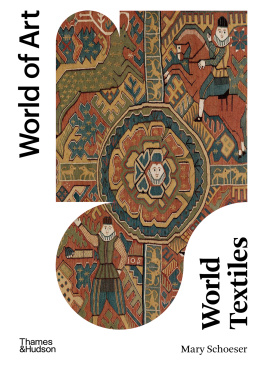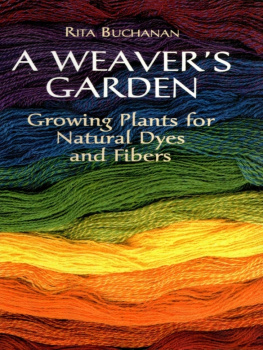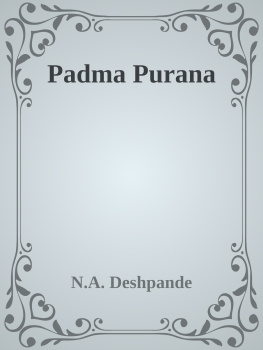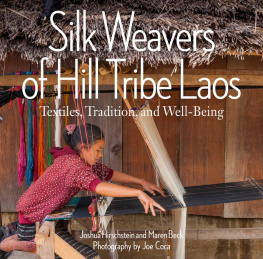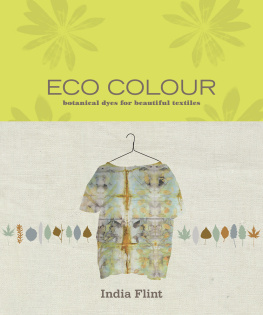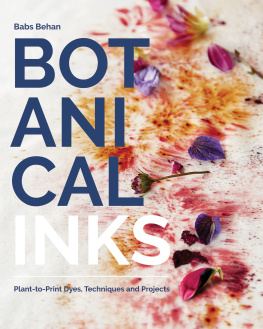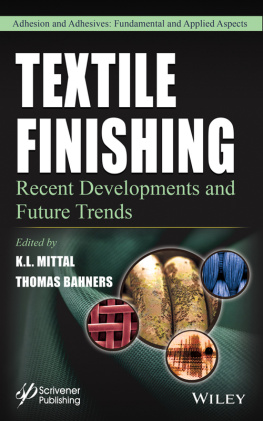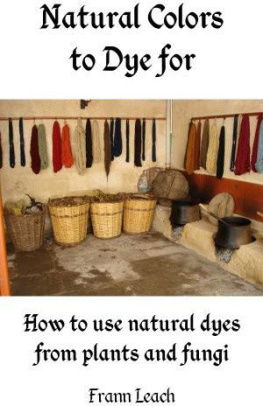Padma Shree Vankar - New Trends in Natural Dyes for Textiles
Here you can read online Padma Shree Vankar - New Trends in Natural Dyes for Textiles full text of the book (entire story) in english for free. Download pdf and epub, get meaning, cover and reviews about this ebook. year: 2019, publisher: Elsevier Ltd, genre: Home and family. Description of the work, (preface) as well as reviews are available. Best literature library LitArk.com created for fans of good reading and offers a wide selection of genres:
Romance novel
Science fiction
Adventure
Detective
Science
History
Home and family
Prose
Art
Politics
Computer
Non-fiction
Religion
Business
Children
Humor
Choose a favorite category and find really read worthwhile books. Enjoy immersion in the world of imagination, feel the emotions of the characters or learn something new for yourself, make an fascinating discovery.

- Book:New Trends in Natural Dyes for Textiles
- Author:
- Publisher:Elsevier Ltd
- Genre:
- Year:2019
- Rating:5 / 5
- Favourites:Add to favourites
- Your mark:
- 100
- 1
- 2
- 3
- 4
- 5
New Trends in Natural Dyes for Textiles: summary, description and annotation
We offer to read an annotation, description, summary or preface (depends on what the author of the book "New Trends in Natural Dyes for Textiles" wrote himself). If you haven't found the necessary information about the book — write in the comments, we will try to find it.
New Trends in Natural Dyes for Textiles — read online for free the complete book (whole text) full work
Below is the text of the book, divided by pages. System saving the place of the last page read, allows you to conveniently read the book "New Trends in Natural Dyes for Textiles" online for free, without having to search again every time where you left off. Put a bookmark, and you can go to the page where you finished reading at any time.
Font size:
Interval:
Bookmark:
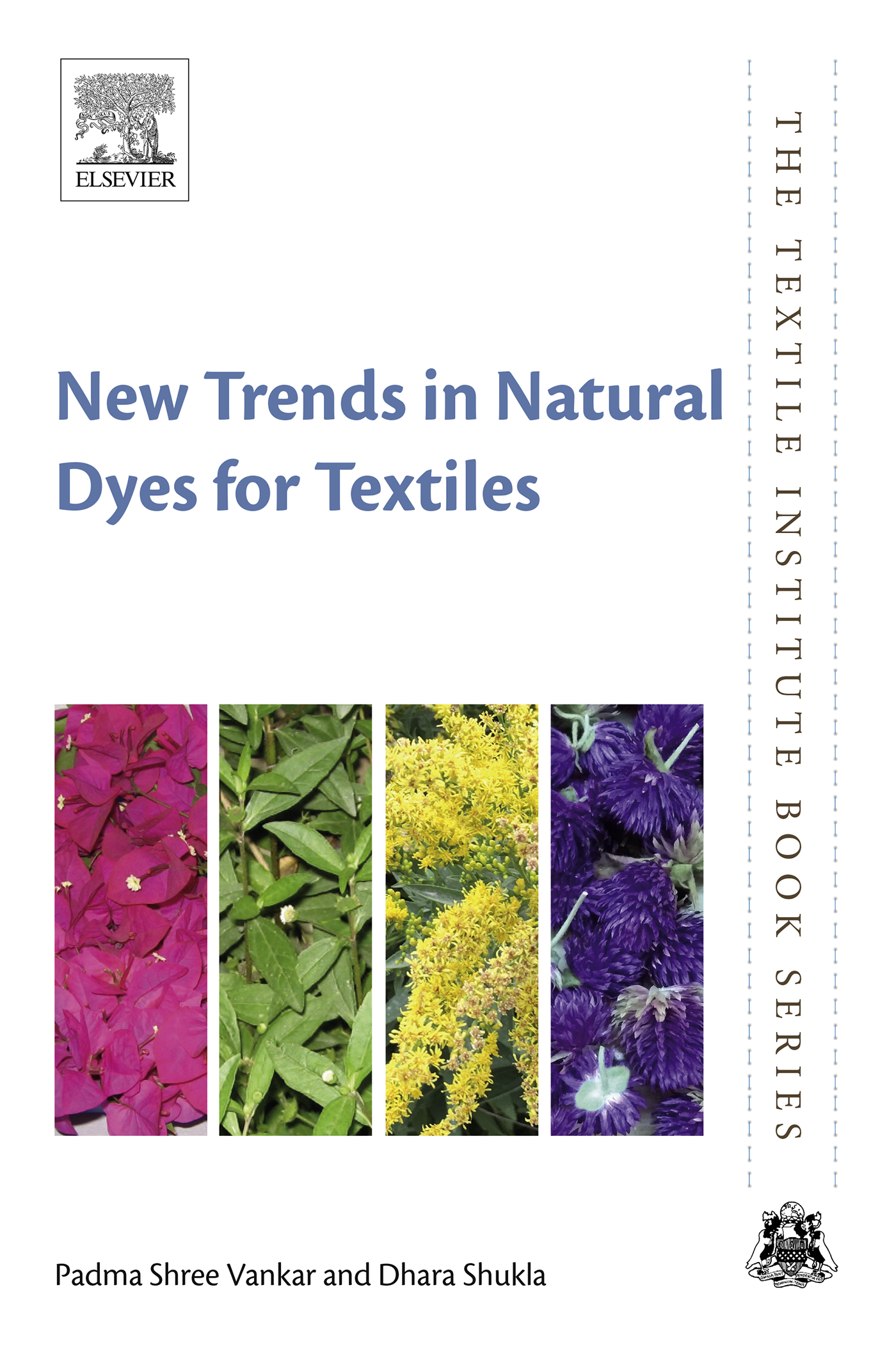
First Edition
Padma Shree Vankar
Dhara Shukla

Woodhead Publishing is an imprint of Elsevier
The Officers Mess Business Centre, Royston Road, Duxford, CB22 4QH, United Kingdom
50 Hampshire Street, 5th Floor, Cambridge, MA 02139, United States
The Boulevard, Langford Lane, Kidlington, OX5 1GB, United Kingdom
2019 Elsevier Ltd. All rights reserved.
No part of this publication may be reproduced or transmitted in any form or by any means, electronic or mechanical, including photocopying, recording, or any information storage and retrieval system, without permission in writing from the publisher. Details on how to seek permission, further information about the Publishers permissions policies and our arrangements with organizations such as the Copyright Clearance Center and the Copyright Licensing Agency, can be found at our website: www.elsevier.com/permissions.
This book and the individual contributions contained in it are protected under copyright by the Publisher (other than as may be noted herein).
Notices
Knowledge and best practice in this field are constantly changing. As new research and experience broaden our understanding, changes in research methods, professional practices, or medical treatment may become necessary.
Practitioners and researchers must always rely on their own experience and knowledge in evaluating and using any information, methods, compounds, or experiments described herein. In using such information or methods they should be mindful of their own safety and the safety of others, including parties for whom they have a professional responsibility.
To the fullest extent of the law, neither the Publisher nor the authors, contributors, or editors, assume any liability for any injury and/or damage to persons or property as a matter of products liability, negligence or otherwise, or from any use or operation of any methods, products, instructions, or ideas contained in the material herein.
Library of Congress Cataloging-in-Publication Data
A catalog record for this book is available from the Library of Congress
British Library Cataloguing-in-Publication Data
A catalogue record for this book is available from the British Library
ISBN: 978-0-08-102686-1 (print)
ISBN: 978-0-08-102773-8 (online)
For information on all Woodhead publications visit our website at https://www.elsevier.com/books-and-journals

Publisher: Matthew Deans
Acquisition Editor: Brian Guerin
Editorial Project Manager: Katie Chan
Production Project Manager: Debasish Ghosh
Cover Designer: Victoria Pearson Esser
Typeset by SPi Global, India
Natural dyes and their use in dyeing is probably the most ancient art of all times. People started using natural dyes as their first intellectual tool to portray their surroundings and themselves by this art. No important or specified information was with them to use the natural colors available near to them. From that period on, this art and its important component, that is, natural dye, has improved itself in terms of stability, shades, and its working archetype until the invention of natural dye's strongest rival synthetic dye. Since then, natural dyes haven't seen any silver lining until again slowly but steadily the new age customers started to realize the importance of natural dye as revival of new optimism in terms of acknowledgment of new and earthy shades provided by colors of nature.
Natural dyes; Dye extraction; Sappanwood; Mordanting; K / S value; Dyeing textiles
Natural dyes and their use in dyeing is probably the most ancient art of all times. People started using natural dyes as their first intellectual tool to portray their surroundings and themselves by this art. No important or specified information was with them to use the natural colors available near to them. From that period on, this art and its important component, that is, natural dye, has improved itself in terms of stability, shades, and its working archetype until the invention of natural dye's strongest rival synthetic dye. Since then, natural dyes haven't seen any silver lining until again slowly but steadily the new age customers started to realize the importance of natural dye as revival of new optimism in terms of acknowledgment of new and earthy shades provided by colors of nature.
One of the most amazing things about natural dye is its source from various plant parts. It can come from wood, fruit, roots, flowers, and even insects. Nature is unique. Such variety of color can be seen is flowers and fruits. Every color of the rainbow can be produced. One of the favorite hot pink dye comes from the wood lumen of sappanwood ( Caesalpinia sappan ); other source is the exoskeleton of a little bug living exclusively and thriving on the beaver tail cactus in Oaxaca, Mexico. The shells are harvested and traditionally mixed with lime juice to create a vibrant hot pink or red dye. Dyeing with plants and animals is a craft with its roots in early times. Although it is time-consuming, labor-intensive, and challenging to do on a large scale, as a result, the art of natural dyeing is slowly becoming obsolete in the industrialized world; however, its smooth color can give tranquilizing effect.
The choice to use all natural dyes sources for many reasons. The most obvious reason is the low impact that they have on people and the environment. In using dye materials that come only from nature, our environment and us can be protected by reducing exposure to toxic chemicals.
The revival of natural dyes has kept the ancient knowledge alive. By using natural dyes, a demand for these products can be created, providing income and incentive for people to maintain practices of local sustainability, remaining close to family and tradition. It is rewarding to know that by using natural dyes, the indigenous communities are gaining support in doing what they and their families have done for thousands of years. However, commercial utility of natural dyes on a large scale for export and domestic market has not been explored much with newer sources. The term natural dye covers all the dyes derived from natural resources such as plants, insects, and animals.
Natural dye applications to industrial products release their medicinal properties of the goods and improve the esthetic value of the product. Natural dyes are unique in that they are eco-friendly and noncarcinogenic. There is a growing demand for eco-friendly/nontoxic colorants, specifically for health-sensitive applications such as coloration of food and dyeing of child textile/leather garments. Recently, dyes derived from natural sources for these applications have emerged as an important alternative to potentially harmful synthetic dyes and pose need for suitable effective extraction methodologies.
Dyeing is the most important part in the production of fabric. The dye is generally applied in an aqueous solution and may require a mordant to improve the fastness of the dye on the fiber. Since the process of adding dyes takes place in the last stage of the process, even the smallest error in the dye application can render the entire batch useless. So, it is vital that the fabric dyeing process is controlled in a cost-efficient manner. Handling of natural dye and its dyeing process needs scientific interventions at four main steps:
Font size:
Interval:
Bookmark:
Similar books «New Trends in Natural Dyes for Textiles»
Look at similar books to New Trends in Natural Dyes for Textiles. We have selected literature similar in name and meaning in the hope of providing readers with more options to find new, interesting, not yet read works.
Discussion, reviews of the book New Trends in Natural Dyes for Textiles and just readers' own opinions. Leave your comments, write what you think about the work, its meaning or the main characters. Specify what exactly you liked and what you didn't like, and why you think so.

